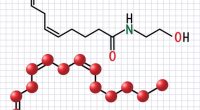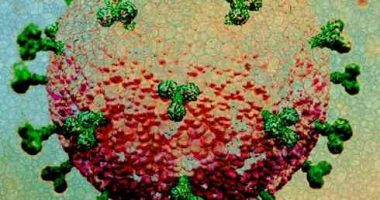Exploring “cancer survival rates by income in Korea” reveals significant disparities that persist across various demographic groups, according to a comprehensive study on the correlation between socioeconomic status and cancer prognosis in the Republic of Korea. The study, conducted between 2002 and 2018, utilizes data from a national cancer cohort, bringing together information from the Korea Central Cancer Registry and the National Health Insurance Service (NHIS) claim database. Aimed at dissecting the trends over time, the research examines the 5-year survival rates (5YSR) of cancer patients, comparing data from two 5-year periods: 2002-2006 and 2014-2018. Results indicate evident improvements in survival rates, particularly for lung, liver, and stomach cancers. However, these advancements are not uniformly experienced across all income levels. The study meticulously classifies income into six brackets ranging from Medical Aid beneficiaries to various NHIS subtypes, providing a nuanced view of survival inequities. Through the calculation of the slope index of inequality (SII) and the relative index of inequality, the research uncovers that higher income brackets consistently report better survival outcomes, depicting a clear socioeconomic gradient in health outcomes. This analysis highlights the crucial role of economic factors in determining cancer survival rates and calls attention to the need for targeted health policies to bridge these gaps.
The research on ‘cancer survival rates by income in Korea’ provides a critical lens through which to view the intersection of health outcomes and socioeconomic status. This scholarly focus emerges against a backdrop where cancer remains one of the leading causes of morbidity and mortality worldwide, with marked disparities in survival outcomes. Particularly in the Republic of Korea, where the health system combines universal coverage with a mix of public and private healthcare providers, the impact of economic disparity on health outcomes, including cancer prognoses, has become a significant concern.
Korea’s health infrastructure, although robust, exhibits variances in service accessibility and quality based on economic capabilities. The national insurance system aims to provide comprehensive coverage but often sees variability in the supplementary costs and the quality of services available to different income groups. These factors contribute to the evident disparities seen in the ‘cancer survival rates by income in Korea’. The Korea Central Cancer Registry, alongside the National Health Insurance Service, offers an invaluable database that allows for an elaborate tracking of these disparities over an extended period. The integration of these databases enhances the capability to meticulously study and understand the long-term trends in cancer survival vis-à-vis income levels.
From 2002 to 2018, Korea experienced rapid economic transformations, paralleled by advancements in medical technology and healthcare policies. These changes have undoubtedly impacted the overall cancer survival rates; the study attempts to elucidate whether these benefits have been equitably distributed across all income groups. Historically, lower socioeconomic status has been linked to a multitude of health disadvantages, including late-stage cancer diagnoses, lesser access to advanced care, and poorer survival outcomes.
Cancer survival rates by income in Korea are a pressing issue because they reflect not only on the efficacy of the health systems but also on broader social inequalities. As this research unpacks, despite overall improvements in cancer survival rates, gaps continue to widen, with higher-income brackets enjoying significantly better outcomes. The data, segmented into six income brackets from Medical Aid beneficiaries to various NHIS subtypes, illustrates a persistent socioeconomic gradient in health that echoes global health inequity patterns.
Through methodologies like the slope index of inequality (SII) and the relative index of inequality, the researchers provide a quantitative foundation to these observations, underscoring the persistent and systemic nature of these disparities. The importance of such studies cannot be overstated as they not only raise awareness but are crucial in guiding policy decisions aimed at rectifying these inequities. This comprehensive examination of cancer survival rates by income in Korea calls policymakers, healthcare providers, and the society at large to consider targeted interventions and reforms that strive for truly inclusive healthcare advancements.
The methodology employed in the study of “cancer survival rates by income in Korea” involves a detailed, longitudinal analysis using data sourced from the Korea Central Cancer Registry combined with claims data from the National Health Insurance Service (NHIS). This approach allows for a rigorous examination of survival rates across different socioeconomic strata over a span of nearly two decades (2002-2018). The study focuses on assessing the five-year survival rates (5YSR) for various types of cancer, categorizing outcomes based on income levels, which are segmented into six brackets.
**Data Collection and Sources:**
Data for this study was meticulously gathered from two primary sources: the Korea Central Cancer Registry and the NHIS claims database. The former provides comprehensive information on cancer incidences across the nation, while the latter offers detailed claims data that includes insurance status and income information based on premium payments and subsidies. This merger of databases allowed researchers to track and evaluate survival outcomes with a socioeconomic perspective, ensuring a robust sample size and minimizing the risk of bias inherent in smaller studies.
**Income Classification:**
Income brackets were carefully defined ranging from the lowest (Medical Aid beneficiaries) to higher brackets represented by different NHIS subtypes. This classification not only reflects a broad spectrum of the economic landscape in Korea but also aligns with NHIS’s structured premium scales, which are based on income and asset evaluations. Such granularity in income bracketing is crucial for accurately assessing the impact of socioeconomic status on cancer survival rates.
**Analytical Methods:**
The statistical analysis involved calculating 5YSR and comparing these between two principal investigation periods: 2002-2006 and 2014-2018. These intervals allow researchers to analyze trends over time and assess the impact of medical advancements and policy changes on survival rates across income groups. To quantify inequalities, the study utilizes sophisticated inequality metrics such as the Slope Index of Inequality (SII) and the Relative Index of Inequality (RII). These indices are instrumental in providing a clear, mathematical assessment of disparities in cancer survival rates by income in Korea, adjusting for various confounders like age and stage at diagnosis.
**Conclusion Drawing and Policy Implications:**
By synthesizing these methodological approaches, the study not only identified persistent disparities in cancer survival based on income but also highlighted how these gaps have evolved over time. Given the evidence presented, the study suggests targeted health policy interventions aiming to address these survival disparities, ensuring that advancements in healthcare and cancer treatment are equitably shared across all economic groups in Korea.
Through such comprehensive and detailed methodology, this research profoundly enhances understanding of the health inequities faced by different income groups in Korea, thereby informing policy and providing a foundation for future studies aimed at narrowing these gaps in cancer survival outcomes.
The study on “cancer survival rates by income Korea” uncovered several critical findings that elucidate the interplay between socioeconomic status and cancer prognosis over a 16-year period (2002-2018). The main result is a clear depiction of unequal survival outcomes across different income brackets, with higher-income individuals consistently showing better survival rates than those in lower-income groups.
One of the primary measurements used in the study was the five-year survival rates (5YSR), which were analyzed across two distinct periods: from 2002-2006 and from 2014-2018. This comparative analysis revealed significant improvements in the overall survival rates for major cancers such as lung, liver, and stomach cancer over these intervals. Despite these advancements, the disparity in survival rates between the highest and lowest income brackets remained substantial, highlighting a persistent socioeconomic gradient in health outcomes.
The researchers employed two inequality metrics, the Slope Index of Inequality (SII) and the Relative Index of Inequality (RII). Both indices demonstrated that the gap in survival rates between socioeconomic groups not only persisted but in some cases widened, despite overall improvements in healthcare. For instance, the SII highlighted a steeper slope in the later period, suggesting that the relative improvement in survival rates was more pronounced among higher-income groups compared to those at the lower end of the income spectrum.
Further analysis showed that factors contributing to these disparities included differences in access to quality healthcare, stage at diagnosis, and availability of advanced treatment options, which are often linked to economic capability. Higher-income individuals typically have better access to healthcare resources, including early cancer screenings and newer, more effective treatment modalities, which contribute to higher survival outcomes.
Moreover, the research indicated that Medical Aid beneficiaries, representing the lowest income bracket, were the hardest hit in terms of survival outcomes. This group showed the least improvement in survival rates over the years studied, pointing to a critical area where health interventions and policies must be targeted.
The findings from this comprehensive analysis of “cancer survival rates by income Korea” underscore the urgent need for policies aimed at reducing health disparities. There is a crucial need for targeted interventions that address these gaps by improving access to high-quality cancer care across all socioeconomic groups. Ensuring equitable distribution of healthcare resources, promoting early cancer detection programs, and subsidizing treatment for lower-income patients are imperative steps recommended by the research.
In conclusion, the study serves as a foundational document that not only raises awareness about the disparity in cancer survival rates by income in Korea but also acts as a critical tool for policymakers. It provides substantial evidence that healthcare equity is far from being achieved in the context of cancer treatment and survival, urging immediate attention and action to bridge this gap for the betterment of public health across socioeconomic divides.
The comprehensive study on “cancer survival rates by income in Korea” offers a stark glance at the real-world implications of socioeconomic disparities on health outcomes. Across the span from 2002 to 2018, while Korea saw significant medical advancements and improvements in cancer survival rates, the gains were not equitably shared across all income groups, highlighting a persistent challenge in healthcare equity.
Future directions in research and policy should focus more acutely on mechanisms to alleviate these disparities. Expanding access to preventative care and early cancer detection among lower-income populations could be instrumental in improving early diagnosis rates, which is crucial for enhancing survival outcomes. Additionally, more research is needed to understand the causal pathways through which income affects cancer prognosis, including behavioral factors, environmental exposure, and genetic predispositions interacting with socioeconomic status.
Investing in community-based health outreach programs that educate and provide resources about cancer prevention and care in underserved areas could also be impactful. Policymakers must look at integrating more comprehensive healthcare policies that not only focus on treatment but also on holistic care that includes mental health services, nutritional support, and rehabilitation, which are critical in cancer recovery phases.
Another vital area for future initiatives is the application of precision medicine in public healthcare systems, which could ensure that all patients, regardless of income, receive the most effective treatments based on their individual genetic makeup. This approach can potentially diminish the impact of income on survival rates by providing high-quality and personalized cancer care that is accessible to all.
Furthermore, it would be beneficial for future studies to explore the long-term economic impacts of cancer survival disparities, including loss of productivity, increased healthcare costs, and wider economic inequalities. Understanding these aspects can enhance the economic arguments for more equitable cancer care policies and support sustainable healthcare funding models.
Conclusively, the study on “cancer survival rates by income in Korea” is a crucial reminder of the disparities that permeate even advanced healthcare systems. It should act as a call to action for ongoing research, policy-making, and community engagement efforts aimed at ensuring that every individual, irrespective of their economic background, has a fair chance at fighting cancer. Closing the gap in cancer survival rates by income in Korea not only addresses health equity but also societal well-being, ensuring that progress in healthcare benefits all segments of society equitably.
As Korea continues to develop its healthcare policies, the focus must remain steadfast on inclusivity and equity to truly transform these improvements in cancer survival rates into success stories shared by all demographics. Only through persistent and targeted efforts can the aim of universal health success be achieved, reflecting a society that values every life equally.









